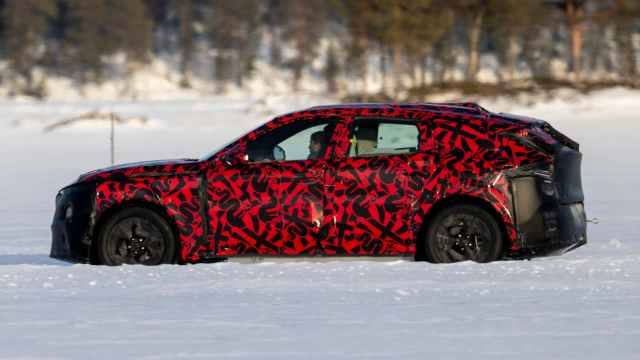Alfa Romeo’s Shift in Electric Vehicle Strategy
As more nations strive to achieve net zero emissions within the next 25 years, automotive manufacturers are reevaluating their product lines. The shift is particularly evident in the growing emphasis on electric and hybrid vehicles. Among these companies is Alfa Romeo, which has been working on a new electric version of its popular Stelvio model.
In March, reports emerged about a prototype of the Alfa Romeo Stelvio being spotted on social media. These images showed a vehicle wrapped in camouflage, with no visible tailpipes, leading many to speculate that it could be an all-electric model. This development sparked significant interest among car enthusiasts and industry observers alike.
Initially, Alfa Romeo had set a goal to transition fully to electric vehicles by 2027. However, the company has since adjusted its approach, deciding to continue producing gas-powered cars alongside electric and hybrid models. This change in strategy was explained by Christine Feuell, CEO of Chrysler Brand and head of Alfa Romeo North America, in an interview with Automotive News.
Feuell highlighted that the company’s product and technology roadmap has shifted from a BEV-only strategy to a multi-energy approach. She noted that Alfa Romeo has 110 dealers in the U.S. network, and maintaining a BEV-only portfolio would be challenging for these dealers. This decision reflects a broader industry trend where companies are balancing the demand for electric vehicles with the need to support existing infrastructure and dealer networks.
Despite this adjustment, Alfa Romeo remains committed to expanding its electric and hybrid offerings. However, the timeline for the Stelvio EV has been delayed. According to Reuters, the launch of the Stelvio in Europe may be pushed back to the fall of 2026, with other regions possibly waiting until 2027. A spokesperson for Stellantis, the parent company of Alfa Romeo, cited current market conditions, uncertainties around EU regulations, and the impact of tariffs as key factors in the delay.
While Alfa Romeo is taking a step back from its initial plan, global interest in electric vehicles continues to grow. Many drivers are showing increased interest in switching to EVs, especially used models. Advances in battery technology have addressed previous concerns about the durability of EV batteries, resulting in longer lifespans and greater reliability.
Electric vehicles offer numerous benefits, including zero tailpipe emissions and lower maintenance costs. For many owners, the value proposition is compelling. Additionally, installing solar panels at home can further enhance the cost-effectiveness of owning an electric vehicle. Charging with home solar energy is often cheaper than using public charging stations or relying on the grid.
EnergySage provides a platform for comparing quotes from vetted local installers, helping users save up to $10,000 on solar installations. By combining solar energy with electric vehicles, owners can enjoy even greater savings and environmental benefits.
For those interested in staying informed about the latest innovations shaping our lives and future, joining a free newsletter offers weekly updates on developments in clean energy, technology, and sustainability. Subscribers also gain access to helpful resources, such as lists of easy ways to contribute to environmental efforts while improving personal well-being.
